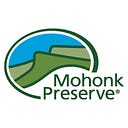Research Report #8 — Frost Dates and Growing Season
For many years scientists and naturalists have been studying and observing the flora and fauna of the Shawangunk Ridge. Foremost among them was Daniel Smiley, for whom Mohonk Preserve’s Daniel Smiley Research Center is named. Dan wrote numerous reports summarizing his observations on various topics. This regularly occurring series will feature some of these reports; some hold tremendous scientific value today and just await an interested researcher to follow up, others showcase a quirky sense of humor or highlight an oddity of nature.
Read the Report: “Mohonk Lake Cooperative Weather Station-Frost Dates and the Growing Season-1896–1973.” 28 February 1974. Daniel Smiley.
A Note From Director of Research Emeritus Paul Huth: When Dan Smiley became official Weather Observer at the Mohonk Lake Cooperative Weather Station in December 1937, the Weather Station had already been in operation for 41 years. In 1930, after graduating from Haverford College, and in the decade of the 1930s, Dan became more involved with the operation of the Mohonk Mountain House business with his brother Keith and other senior family members. This included responsibility for “Park and Grounds” and “Farms,” and with others, planning and operation of the Mohonk Garden. Last spring frost and first fall frost dates and the resulting length of the growing season was all important when operating five big farms and the extensive show gardens which were part of the business.
Officially, a frost is recorded when the minimum thermometer in the weather box records 32°F or lower. However, there are subtle differences such that it may or may not result in a frost “killing” tender vegetation. Dan began making notes and gathering details about differences in dates of frosts occurring on the ridge as compared to observations by Mohonk Employee John Yeaple from the nearby Clove, as well as “radiational” frosts that damaged garden plants
occurring even when the temperature didn’t reach 32°F in the weather box.
In February 1974, Dan assembled the 78 years of weather data to look at the yearly frost dates and calculate the length of the growing season. This, as he noted, was “part of of a broader tabulation and study of weather observations covering averages, extremes, and trends.” As I have noted elsewhere, it must be appreciated that these analyses were all done by hand without the aid and speed of digitization, taking considerable time to reference, calculate, and
prepare. Dan’s resulting analysis showed that the last spring frost averaged April 25th, the first fall frost averaged October 21st, and the length of the growing season averaged 178.8 days.
In the 78 years of record, the extreme for earliest last spring frost was April 3, 1901, and the latest last spring frost was May 16, 1936. The extreme for earliest first fall frost was September 20 (19), 1920, and the latest first fall frost was November 15, 1946. The shortest growing season on record was 139 (138) days in 1920, and the longest growing season was 214 days in 1955. (Numbers in brackets indicate corrections made by Paul Huth).
Looking at the digitized 122 year long weather record, 1896–2017, we note the following. The last spring frost averages April 24th, one day earlier than when Dan did his 1974 summary. The first fall frost averages October 22, one day later than Dan found in 1974. The growing season now averages 180 days. In addition, the latest last spring frost occurred on May 17, 1983. The longest growing season on record is 217 days, in 1994.
Read the Report: “Mohonk Lake Cooperative Weather Station-Frost Dates and the Growing Season-1896–1973.” 28 February 1974. Daniel Smiley.
